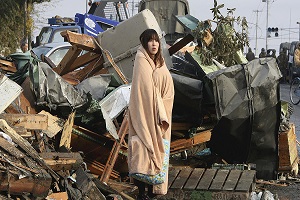TEHRAN, October 13 -A survivor of the Fukushima nuclear disaster has submitted evidence to United Nations Human Rights Council, testifying that she was “forced” to return home to a contaminated area after the government ended financial subsidies for voluntary evacuees.

TEHRAN, Young Journalists Club (YJC) -On Thursday, Mitsuko Sonoda submitted evidence of the “ongoing human rights abuses of Fukushima victims” to the UNHRC, a source with the Greenpeace Japan in Geneva told Xinhua news agency.
Sonoda, who voluntarily fled the contamination zone in wake of the Fukushima Daiichi nuclear power plant disaster in March 2011, believes she had no other choice and was forced to move back to her village after the government revoked subsidies for those who voluntarily left the area.
Greenpeace confirmed the submission of evidence to the UN body, saying Sonoda left the Fukushima prefecture six years ago with her husband in order to protect their 10-year-old son.
“I want to tell the world we haven’t had our human rights respected since the disaster. I don’t want this to happen to anyone else in any other countries,” said Sonoda, according to Greenpeace which had a live broadcast outside the UN headquarters in Geneva, Switzerland.
“I know so many mothers who have been suffering and struggling as a result of the nuclear disaster because the Japanese government and [Tokyo Electric Power Company] TEPCO won’t admit to their responsibilities,” she added just before submitting her evidence.
The 2011 disaster occurred when three of the Fukushima plant’s reactors experienced fuel meltdowns as a result of an earthquake and consequent tsunami. The spewing radiation forced 160,000 people to flee their homes.
Over 12,000 households (around 27,000 people) have left surrounding areas that were not covered by the government’s mandatory evacuation orders. Unlike people who were forced to relocate under evacuation mandate, voluntary evacuees only received a fraction of the payment that the government offered in compensation to mandatory evacuees.
For six years, most of the voluntary evacuees lived in other parts of Japan through government-sponsored subsidies which covered housing allowance. That program ended in March this year, after the government claimed that the “living environment (in Fukushima Prefecture) is in good order.”
The denial of the government financial aid, Sonoda and others like her believe, left people with a stark choice. They can either go back to their homes in the areas which they fear are still unsafe or try to survive elsewhere with no government subsidies.
Campaigners led by Greenpeace have repeatedly called on Tokyo to declare Fukushima surrounding areas as a danger to human health if radiation levels reach over one millisievert (mSv) a year. People, however, are encouraged by the government to return home if radiation levels are below 20 mSv a year.
Greenpeace has also urged the government to keep offering financial assistance to evacuees so they won’t be forced to return.
“The Japanese government’s resettlement policies not only fail to meet obligations under multiple human rights treaties but also clearly violate Japan’s own domestic law regarding the treatment of people impacted by the nuclear disaster,”said Kendra Ulrich, Senior Global Energy Campaigner for Greenpeace Japan in a press release.
“Although most Fukushima nuclear evacuees meet the criteria for consideration as Internally Displaced Persons (IDPs), the Japanese government has refused to acknowledge them as such and ignored international frameworks for their protection.”
Earlier this week, a court in Fukushima prefecture ordered the Japanese government and the TEPCO nuclear operator to pay out about 500 million yen ($4.44 million) in compensation – less than $1,200 per claimant. The class-action suit was filed by about 3,800 people, the largest group among about 30 similar lawsuits involving 12,000 people pending across the country.
The operator was found guilty of failing to adopt the necessary safety measures despite knowing of potentially devastating consequences in case of a massive tsunami as early as 2002. The government, the court said, failed to supervise the operator prior to the disaster.
Source:RT
Related News
Your Comment